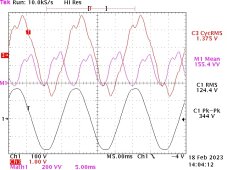JohnGalt1717
New Member
- Joined
- Dec 22, 2021
- Messages
- 107
X # of Growatts that either have the ground screw removed or come from SS. (best is to take the main board out and neuter the pin that the ground screw connects to so that there's no chance of arc if you're using ones not from SS)Hi, I'm new to the form... and honestly I could only spend 6+ hours trying to parse through the 800+ posts on this thread looking for an answer. All of the answers and replies get intermixed with "that will work" right after someone says that a different solution will not work. I understand some options cannot be made to work... but that doesn't mean no option will work.
To help summarize the past 800+ posts and narrow the answer for people who already have all or part of an SPF 5000 ES system:
- SPF 5000 ES from SS, or circuit board ground screw removal (no internal bonding between ground and neutral on AC input, which seems to be something someone can confirm with a DMM)
- 120VAC loads required, but not specific to any transformer(Growatt At5000, the solar edge transformer, or isolation transformer)
What are safe options for a system configuration to use the US grid as a backup and or input?
1 or more Growatt auto-transformers (or someone else's doesn't matter as long as it takes 240V in and outputs a 120V neutral center tap) Generally 5000 watts is enough for an even remotely well balanced house.
240V incoming from Grid WITHOUT neutral (just both hot legs) into the Growatt AC IN
240V outgoing from the Growatt.
Make sure that you have the phases aligned. IE: Red in/Red Out, Black In/Black Out and every inverter in parallel lined up in your panel so that all phases are in sync for both grid and inverting (the inverters will correct but still...) or you'll get a hard switch from the Growatt that UPSes etc won't like.
If you are going to have some sort of switch that bypasses the Growatt and goes directly back to the grid power, then you MUST either have the auto-transformer still hooked up and NO NEUTRAL FROM THE GRID OR you MUST switch the neutral too using a 3 pole, double throw switch ($$$$!!!)
In short, you're fine as long as the grid's neutral is not connected anywhere while the growatts are also connected.
Last edited:




